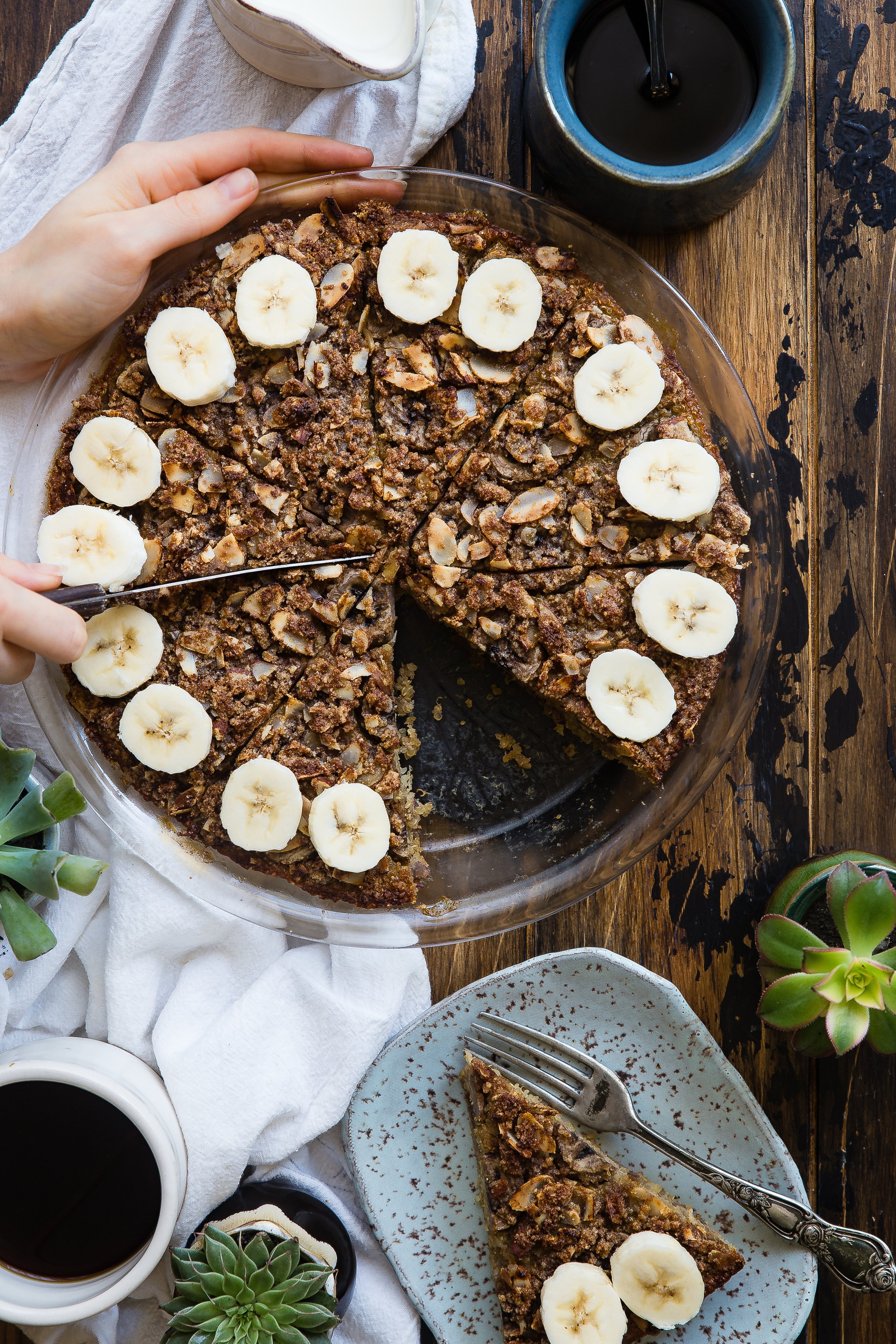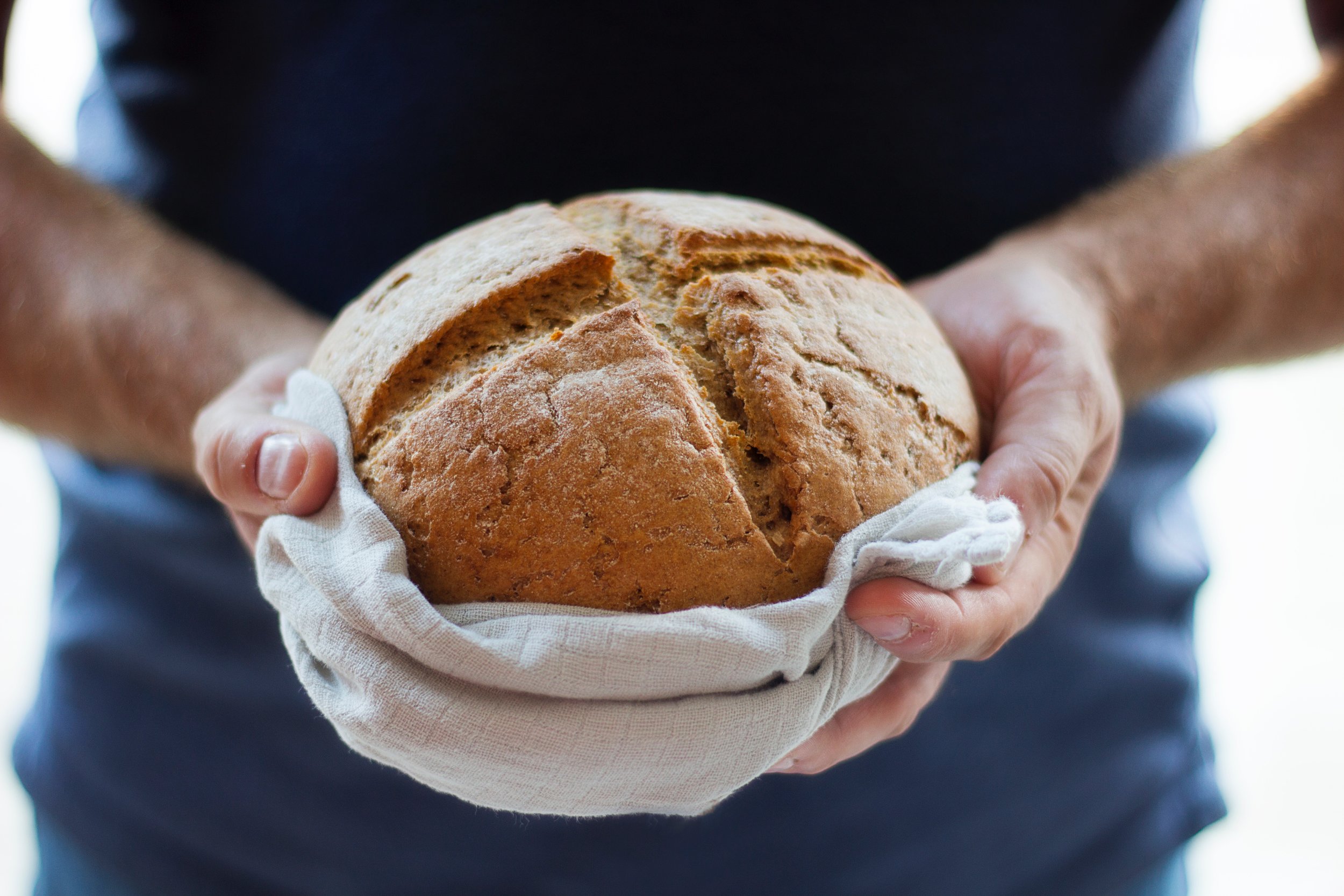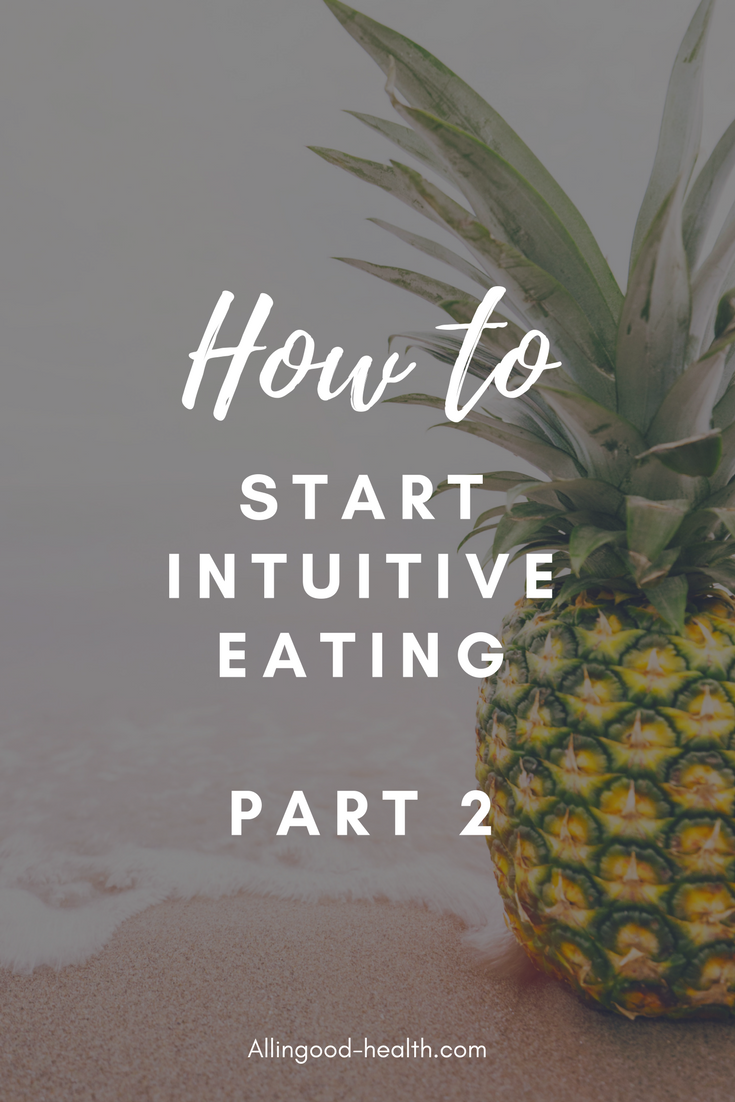Intuitive Eating During the New Year and Beyond
We're a few weeks into January and still in the thick of "New Years resolution season." Most of the gyms and diet companies are still pumping out ads for their products like it's nobody's business. So if you've recently started working on your relationship with food, this can be a challenging time to continue on the road toward intuitive eating.
We're a few weeks into January and still in the thick of "New Years resolution season." Most of the gyms and diet companies are still pumping out ads for their products like it's nobody's business. So if you've recently started working on your relationship with food, this can be a challenging time to continue on the road toward intuitive eating. Some major diet companies have even started using intuitive eating principles to help sell their weight loss products and brand. The temptation to fall back into old habits can be overwhelming.
But don't lose hope. It's normal and okay to feel that tension and to question what you're doing. Below I'm sharing a few tips on how to navigate the resolution hype and continue striving for freedom from diets and a healed relationship with food.
1. Remember that your reasons for pursuing a different route are still true, even during this season. Whatever it was that brought you to intuitive eating is still there. It's easy to second guess ourselves when we see what the rest of the world is doing and wonder if we should be doing that too. Consider keeping a journal to record your past relationship with food and what it has been like up to this point. Reference those notes to reflect when you start to feel like restriction is the better option.
2. Know that healing your relationship with food is not a fad. Unlike most of the products and plans being promoted right now, making peace with food is not simply a trend. The mindset shift can transform every area of your life. For most people, food is intricately linked to emotion and relationships. Healing the way you think about food can also help improve other areas of life. When we're not constantly worried about how many calories we're eating, we have time to spend with our loved ones, we can meet over meals without anxiety and spend brain power focusing on more important work.
3. Understand that taking the focus off of weight loss does not mean you're abandoning your health. You're simply giving yourself unconditional permission to eat all foods. And that doesn't mean you have to eat only desserts all the time to prove that you're doing it right. The point is that you're removing all the arbitrary rules that diet culture provides and instead putting the power back in your own hands. You have the power to eat foods that nourish you physically as well as emotionally whenever you want and need to. Health is so much more complex than sticking to a rigid calorie guideline and getting x amount of minutes of exercise/day. You're not a formula and following those guidelines doesn't automatically equal health.
Keep these tips in mind as you go forward in your journey to intuitive eating. It can be a long and challenging road, especially in January, but the reward is freedom and a fuller richer life. I'll be cheering for you!
How to Start Intuitive Eating-Part 3
This is the final post in the series on 'getting started with intuitive eating'! If you're just joining us, check out the first two posts to catch up: How to Start Intuitive Eating-Part 1
How to Start Intuitive Eating-Part 2
Today we're wrapping up our discussion on how to start intuitive eating. While we haven't covered all of the principles, hopefully this series has helped you start to think differently about your relationship with food, and to begin taking steps toward becoming an intuitive eater!
Part Three
Honor Your Feelings Without Using Food
We all deal with negative emotions from time to time, it's part of being a human. We begin to learn coping skills for those feelings from a young age. Certain ways of coping may be more constructive than others. Turning to food for comfort, or to temporarily numb our feelings, can definitely serve a purpose in that moment. However, it's not going to resolve the underlying issue, so it's not the most helpful coping strategy.
The first step to finding a more helpful way to cope can be to bring awareness to the negative feelings. Sometimes we don't even realize we're turning to food out of a desire for comfort or distraction. If we can learn to identify the negative feelings, we're one step closer to dealing with them in a more constructive way. Once we can figure out how we're feeling, we can give ourselves a chance to pause and ask what we really need in the moment. Sometimes, we turn to food to help us deal with loneliness or anxiety, but that doesn't ultimately help us resolve those feelings. Taking a pause lets us decide whether choosing food will be helpful in the moment or not. This is not to say that we can never do any kind of emotional eating ever again.
Part of food's purpose is to be an experience that we enjoy and makes us feel good. But we don't want food to be our only way of coping with certain feelings. As you start working through this principle, you may find that there is more going on that feels too big to handle alone. I would recommend reaching out to a therapist to help you work through some of those feelings.
Ultimately we want food to be neutral, but still enjoyable. As intuitive eaters, we want to be in the driver's seat- not the food. Bringing some further awareness to what's going on under the surface, with our emotional and mental state, can help us move forward in the process.
Respect Your Body
The final principle that we're reviewing in this series is about respecting your body. This is one that you'll likely continue to work on throughout your journey to intuitive eating. I wanted to include it in the "getting started" series because I think it's important to start thinking about our bodies in a different way. Body image work can be a long process. But the first steps are simply letting yourself accept and respect your body. It may be helpful to also dive into some of the research and ideas behind Health at Every Size.
It's important to accept our bodies as they were created. We are not all meant to look alike-this includes the size of our bodies. When we accept our "genetic blue print" we are better able to let go of the diet mentality. If we're no longer chasing the thin ideal then we won't have a need for diets. We're free to become intuitive eaters and let our bodies settle in the weight that it's most comfortable and healthy.
A simple first step could be to list all the things you're grateful about for your body. Is it that you were able to carry and grow a baby, that you can walk to the store nearby or simply that your body allows you to move through the world, and gives you the ability to enjoy your favorite things. Whatever it may be, list them out and remind yourself regularly of what you're grateful for.
That's it for this series! I hope you found it beneficial and if you're interested in really digging in and starting this work for yourself, I'd love to partner with you! I'm accepting new clients for intuitive eating work so please reach out if this is something you're interested in!
How To Start Intuitive Eating-Part 2
Today we're continuing the series on 'how to start intuitive eating.' If you're catching up, check out the first blog post (How to Start Intuitive Eating-Part 1). In part one we learned about letting go of the diet mentality and the importance of giving yourself unconditional permission to eat when getting started on your journey toward intuitive eating. Today we'll expand on that foundation and put some practical tools to use.
As a reminder, this is simply a brief overview of some of the principles of intuitive eating. They're tools to get you started. Working with a dietitian or intuitive eating counselor will allow you to really work through your own process. If that sounds like something you're ready for, I'd love to work with you! Head over to the services page and schedule your free discovery call today.
Part Two
Honor Your Hunger
Many times intuitive eating is oversimplified and boiled down to eating when you're hungry and stopping when you're full. Those are pieces of the puzzle, but you're not seeing the full picture. It begins to come together once we add in more of the pieces but on their own, each principle doesn't make you an intuitive eater. It's when we put them all together that it comes into focus.
We're born knowing how to listen to our hunger. But along the way diet culture usually gets ahold of us and we start listening to external cues about when to eat. If we're honoring our hunger, we're listening to our body's signals that tell us when we start to get hungry. Hormones in the body get activated and send signals to the brain to remind us to eat. They start out quietly at first but the longer you ignore them, the louder they become.

At the first signs of hunger you may notice a slight hunger pang, alerting you that you should probably start getting some food ready. If ignored, that soft reminder will grow into a louder reminder; maybe with a growling stomach and then trouble focusing, lightheadedness, headache and irritability (aka hangry).
When we ignore hunger to the point of "hangriness," we may experience that primal drive to eat and end up way overeating and feeling out of control around food. So, ideally we're feeding ourselves before we get to the lightheaded, irritable stage. It can take some time to learn where you feel your best. The process may take longer if you've been dieting or restricting intake for a while. One thing that happens when we chronically ignore hunger (like when dieting) is that those hunger signals begin to get quieter. The more we ignore hunger, the quieter they become and fade into the background. Even if we decide we want to start listening again, they may not be there right away.
It is possible to get those hunger signals back, we just need to start feeding our body regularly. We want our body to start trusting us again. It needs to know that it will be fed regular meals. Generally, we should be feeding ourselves something every 3-4 hours for adequate blood sugar management. After a while, your body will begin to trust that you're going to be feeding it regularly and those hunger signals will become a little louder over time.
Respect Your Fullness
On the flip side of hunger is fullness. This can be a little trickier to discern than hunger. I think we all know what it feels like to eat past the point of fullness or be "thanksgiving full." But when do we stop eating for comfortable fullness? This will vary from person to person. But the idea is to stop eating when you're comfortably full and no longer hungry.
It can be helpful to try to eat your meals mindfully, removing distractions if possible so that you can pay attention and check in with how you're feeling during the meal. Think about how the food tastes and whether you're wanting more. Sometimes we eat past the point of fullness, intentionally, and that's okay. Food connects us to others and is meant to be enjoyed. If we continue eating something even though we know we're going past the point of fullness, it's okay. Sometimes that is what we choose because we are enjoying the meal and the whole experience.

Other times we may have thought we were full from our meal, but shortly after we're feeling hungry and wanting a snack. This is okay too. It's all part of listening to your body and becoming more attuned to its signals. We may even eat a meal and feel full but not satisfied. Whether the food we chose is not what we ultimately wanted, or we chose it out of a dieting mindset. We can be full but not satisfied or satisfied but not full. If you think about eating a salad, this may be filling, but not always satisfying. Or eating some chocolate may be satisfying, but not necessarily filling. If we're listening to our bodies well, hopefully we're getting some of both. Foods that are both filling and satisfying to us.
To help you understand your hunger and fullness during this process, you may want to use a hunger and fullness scale. This can help you gauge where you're landing throughout the day and help to bring some awareness around what you're doing now.
Stay tuned for Part 3, the final post in this series on getting started with intuitive eating! Part 3 will be coming out in the next few weeks so be sure to check back in on the blog or social media.
If you have any additional questions about getting started with intuitive eating feel free to leave a comment below or reach out on the contact page!

How to Start Intuitive Eating-Part 1
Depending on your history and background, you may start in a different place than someone else when learning how to become more attuned in your eating. It's different for each individual. Also, please know that this isn't a structured, step-by-step process. Sometimes we take a few steps back and have to revisit some areas again. That's a completely normal part of the process. It can take a lot of work and time to undo all the messages we've learned about food over the years. Contact me if you'd like individualized support through the process! Through this blog series we'll walk through some of the principles of intuitive eating to help you begin to make peace with food.
Part One
Let go of the diet mentality
To begin our journey with intuitive eating, one of the first things we'll need to do is to leave behind the diet mentality. All the cleanses, detoxes and food rules we've learned over the years need to go. This allows us to start seeing food neutrally; neither "good" nor "bad." Diet messages promote the morality of food, and to fully embrace this way of eating we need to start with a clean slate. Most of us receive messages from a young age that tell us we shouldn't trust our own bodies. We are taught to listen to external cues about when, how much and what to eat. Letting go of the diet mentality encourages us to flip that idea it's head and listen to our own bodies for a change.
To decide if you're ready to let go of the diet mentality ask yourself a few questions:
Have diets truly worked for me in the past?
Why do I stop dieting or restricting my food?
How do I feel when I quit my diet or x,y,z food rules?
How much time do I spend thinking about my food choices?
Think about your answers to these questions. If your responses include anything about guilt, shame or exhaustion that's a good clue that the diet life hasn't worked for you in the past. Understanding this fact can better allow us to let go of our desire for control over food and our bodies. When we take a step back and view that way of eating as harmful, it's easier to walk away. The freedom that comes with walking away from diets is amazing. This is a big, brave step but it's 100% possible and necessary for intuitive eating to work for you.
Give Yourself Unconditional Permission to Eat
After letting go of diets, it's easier to give ourselves unconditional permission to eat. You're taking the power away from those external sources and placing yourself, and your inherent wisdom about your own body, back in the driver's seat. By accepting that there are no good or bad foods, we can give ourselves permission to eat all foods at all times. We get to let go of the rules dictating what and when we eat. When we try to restrict certain foods or food groups it creates feelings of deprivation. Deprivation will lead us to start craving all the "bad" foods that we were trying to restrict. Then, after using up all the willpower we have, we'll end up giving in. When we inevitably "give in" and eat the forbidden foods, feelings of guilt may arise and we'll resolve to do better next time and start restricting again. So you can see a cycle forming..restriction, deprivation, cravings, "giving in," guilt, restriction.. and around it goes.
To break out of this cycle we need to give ourselves unconditional permission to eat. Food loses its power over us when there are no rules. In the beginning this may look like eating a lot of the foods that we've been restricting. This is part of the healing process. Test the boundaries. See how it feels to allow yourself to eat everything and anything. It may also be helpful to keep a journal to explore your feeling throughout the beginning stages of this process.
Part 2 of this series will be coming out soon! Sign up for the newsletter or follow me on social media to know when the next post goes live.
If you're ready to heal your relationship with food and dive into intuitive eating, let's work together! We can address your own individual needs and experiences to make sure you get the most out of the process and your journey!












